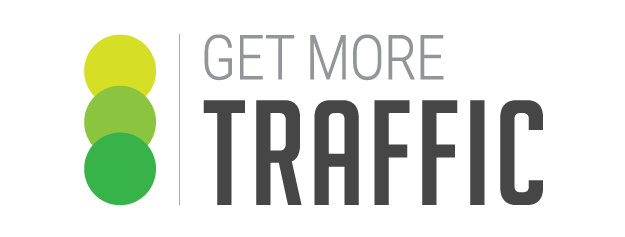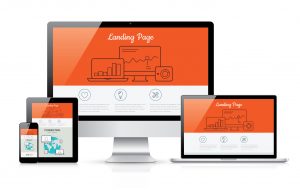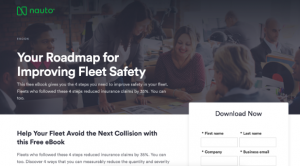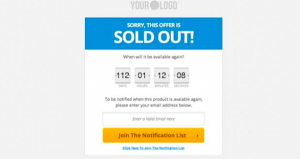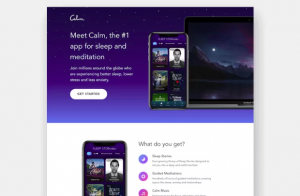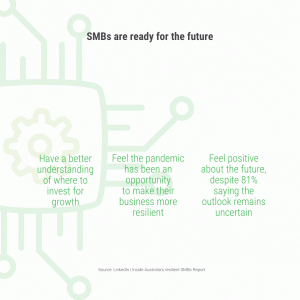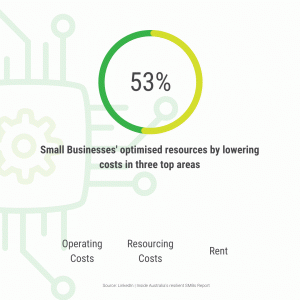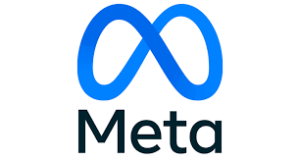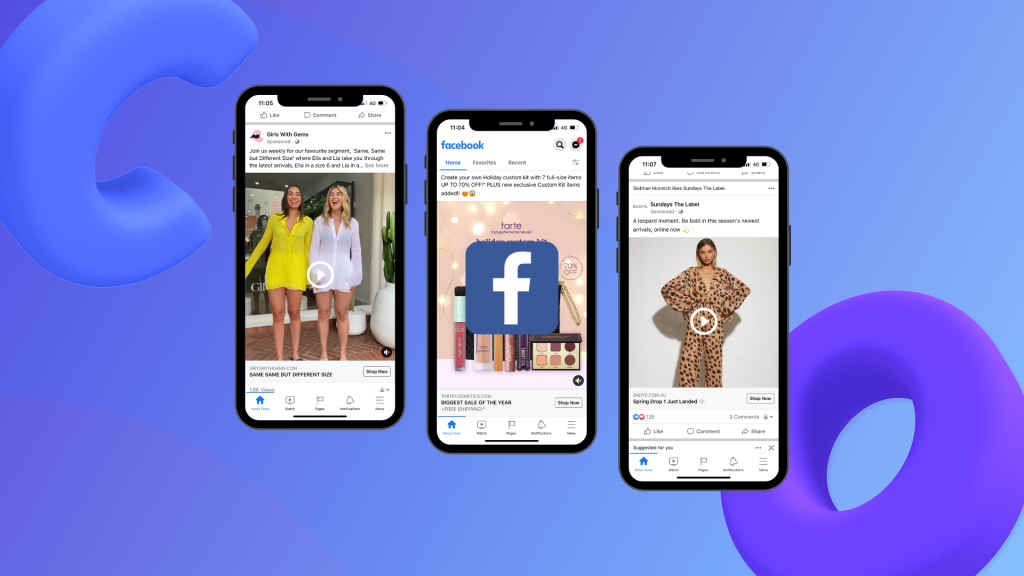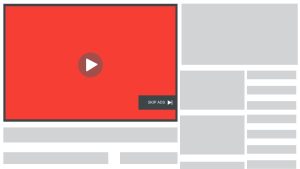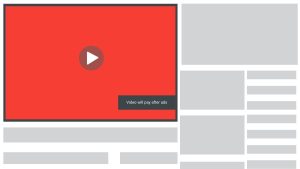The Ultimate EOFY Checklist For Your Small Business
EOFY Checklist For Your Small Business
Unless you’ve been living under a rock, you know the end of the financial year is approaching. That means it’s probably time to get your social media marketing in order. But if you really want the end the financial year on a high note, there are some things you’re going to want to do. Below is our ultimate EOFY checklist for small businesses, guaranteed to help you end the financial year with a bang!
Get More Traffic’s Top 10 EOFY Tips
At GMT, we’re helping you get ready for the EOFY. That said, here is a checklist to help make the preparation just that much simpler.
Review And Coordinate Your Accounts
Do you have any outstanding debts or vice versa? Say you’ve paid for Google Ads in Australia but your account is overdue or maybe you’ve provided a service to someone else who now owes you. Use this period to get on top of what you’ve paid to others and what they’ve paid you. You’ll want to make sure you pay vendors any money owed as well. Sorting all this out means you won’t have to worry about it being taxed next year.
Keep Records And Back Up Your Data
You’ve heard the term, ‘I’ve got receipts’, and well there’s no hard evidence like proof of purchase. Additionally, we recommend backing up any crucial files or data onto a hard drive independent of your computer. You know, for safe measure. Trust us, if systems fail you’re going to thank yourself for being so proactive.
Review Your Insurance
While you’re at it, you might as well review your insurance policies for any updates. Doing so will allow you to determine if you’re still on a package that’s right for you and your business. It’s also a great opportunity to update your insurer on any change in circumstance.
Conduct An Audit
Count and recount your inventory so you know exactly what you have and what you need. Doing so will allow you to match what’s on paper with what’s on hand.
Use Your Calendar
Planning is key so make a note of all your upcoming due dates, including by when you need to lodge your tax returns.
Lodge Your Taxes
In Australia, the ATO expects you to lodge your taxes on or before October 31st so we recommend getting ready early. Organise your expenses and other tax deductions so you can have your return ready for submission sooner rather than later.
Rectify Bookkeeping Errors
With the financial year ending, you’ll want a fresh start going into the new year. We recommend going through your bookkeeping and identifying any transaction errors on your bank accounts and credit card statements.
Implement And Update Management Software
Management software makes keeping track of your inventory, finances, and other business assets easy. While we also encourage you to check all of these things manually during this time, implementing and updating your management software will save you time and resources in the long run.
Prepare Financial Reports
Running financial reports helps point out where your business rests financially. Additionally, they’re fantastic for helping businesses outline and plan their budgeting. There are three financial reports you’re going to want to run this financial year and every subsequent year after. They are:
Balance sheet
Cash flow sheet
Profit-and-Loss (P&L) statement
Prepare For The New Year
If you’re reading this checklist, you likely want to get on top of everything before the new financial year rolls around. By doing so, you’ll be able to figure out how your company performed over the past year and make an action plan for the future. Take a look at what worked and what didn’t and look for areas in which you can improve. Set goals and establish timelines to help you stay on track.
Make The Most Out Of Your Social Media Marketing With The Specialists At Get More Traffic
Is your website a highway at peak hour? Because boy, you’ll be getting a lot of traffic with the help of our digital marketing experts. One of the leading digital marketing agencies on the Gold Coast, we’re passionate about helping businesses all over Australia harness the power of social media marketing to take their bookings to the next level. So, if you’re ready to drive traffic to your website the green light and learn more about marketing, contact the team at Get More Traffic today!
How to Start Planning Your Best Financial Year Ever!
The end of the financial year is fast approaching and many businesses are scrambling to create some last-minute campaigns to increase their revenue.
However, just as important as the end of the financial year, is the beginning of a new one. While it’s always good to finish strong, it’s also important to get a good head start against the competition. This means having a plan already set in place to help you jumpstart and launch your way towards success.
For that reason, we’ve put together a couple of tips on how you can get started planning the new financial year with your team and organisation.
1. Review Your Existing Business and Marketing Plan
The start of a new financial year is always a good time to review your current business and marketing plans in order for you to create a sound strategy moving forward.
As you review your business plan, make sure that it includes the following:
- Your mission and vision statements
- What products, packages, and services you’re currently offering
- Your company structure, including the key staff and leaders
- An overview of how you plan to make sales
- A map of your basic customer journey
This quick review of your company’s basics and foundations should help remind and refresh you of the general overview of who you’re serving and what problems your business solves.
This quick refresher should also help you reexamine and reevaluate your current goals, plans, and offerings and whether you’ve met and accomplished them, and what you’re plans might be moving forward.
2. Review the Past Year and Your Current Status
Before you can set a path for where you want to go, you first have to look back and see how far you’ve come.
Do a review and an executive summary of the past financial year. What goals were established? Which goals were achieved? Are there any areas in your business that you could improve on? This would be the perfect time to get feedback and suggestions from leaders and managers.
Take a day or two to meet with your staff and stakeholders to discuss the following points:
- A SWOT analysis (strengths, weaknesses, opportunities, and threats)
- Does your current organisational structure need to change to better suit the organisation’s needs?
- Are you setting the right KPIs for your workforce?
- How have sales performed in the past year? What milestones were achieved?
- Competitor analysis–what areas are they succeeding in and how can you match their growth?
- Are there any plans set in place for unforeseeable challenges?
It will take some time to gather all this data and information, and much more to discuss them amongst your leaders. But achieving a good and thorough understanding of how your business has performed over the past 12 months will help you move forward with setting the right goals for growth.
3. Decide on Your Future Goals and Targets
Now that you know where you’re coming from, it’s time to set your sights on the path ahead.
Think about what projects, campaigns, and goals you want to accomplish in the next 12 months. Do you want to further increase revenue or sales? Is your goal to pay off any business debt? Are you looking to expand, launch new products or projects, or pivot in a different direction?
Take ample enough time to flesh out your goals for your business. Be specific. Set deadlines and timeframes so that things continue to move forward, and clearly communicate these goals throughout your organisation.
4. Create a Plan to Bridge that Gap Between Your Current State and Your Future Goals
Now comes the part where you have to work at bridging the gap between hope and reality. After all, every journey begins with a single step.
To achieve that, you need to do the following:
- Breakdown each of your goals into several milestones.
- Set deadlines for each milestone
- Assign a leader or manager to oversee the accomplishment of each goal
- Lay out the tasks that need to be accomplished in order for those goals to be achieved.
- Set KPIs for each of the teams involved
When working on a strategic plan, always involve the key stakeholders to help provide proper feedback and guidance on the best path that you can take. The better you’re able to break down the steps necessary to accomplish your goals, the better. Start with the end in mind, and work backwards to determine how you can get from A to B.
In implementing that plan, however, sometimes you need an excellent partner to help you execute and achieve your goals.
Don’t worry! Because with the help of our digital marketing experts here at Get More Traffic, we can help you achieve many of your business goals for the new financial year through proven expert digital marketing strategies.
We’re passionate about helping businesses all over Australia harness the power of digital marketing to take their sales to the next level. If you’re ready to give traffic to your website the green light and learn how to increase sales and engagement through an always-on marketing strategy, contact the team at Get More Traffic today!
How To Guide: Landing Pages To Engage Customer’s Attention
With COVID-19 impacting local businesses everywhere, people throughout the country are ditching the physical stores and moving online to keep their companies afloat. Over the past two years, digital marketing on the Gold Coast has boomed. Business owners are investing heavily in search engine optimisation, social media marketing, Google Ads, and more. However, without a relevant and valuable landing page to direct traffic to, many local businesses are still missing out on the full potential of digital marketing.
Digital marketing agencies help Gold Coast businesses in a number of different ways, offering them a range of valuable insights they may otherwise have gone without. One of these insights is introducing business owners to the power of landing pages. You may be wondering… What even is a landing page? While we’re not expecting you to know the ins and outs of every marketing tool (after all, that’s our job, not yours!), we guarantee that you’ve visited a landing page at least once.
Designed to convert website traffic into leads, landing pages can help to grow your business and establish your reputation as a relevant and successful brand. Rather than leaving searchers to navigate a multi-page website, landing pages place them on a one-page site containing the exact information they need. Directing your traffic to a specific landing page can reduce your bounce rate, increase conversions and boost your search engine rankings. Now you know what a landing page is, let’s discuss: What makes a landing page good, and what kind of landing pages should your business be looking to create?
What To Put On Your Landing Page
When you’re setting up your landing page, you should be viewing it as a sales pitch to your audience. With only a single page to work with, you’re going to want to create a convincing argument as to why people should go ahead and give you business. No matter what kind of landing page you decide to create, unique selling points are essential for all of them. Ask yourself what makes your business special and why your products/services are a cut above the rest. Then, tell your audience! If you’re stuck for ideas, consider the following:
- Who Made Your Products: In recent years, more people have become concerned with ethics at every stage of the supply chain. From the people responsible for sourcing a product’s materials to those processing their payment at checkout, customers are starting to care. If your business traces its entire supply chain and can guarantee the health and wellbeing of employees at every stage, that’s a major selling point. It’s also just a better way to do business!
- Locally Owned And Operated: Another huge selling point for many people in Australia is knowing that they’re supporting local trade. Not only do local businesses strengthen our economy, but they are also often more personable and can guarantee higher quality products/services. If your business is locally operated, family-run, or offers Australian made products, highlight that on your landing page! While you’re at it, we’d recommend getting certified as Australian Made if you can.
- Covid Policies: Ever since the pandemic, people have been eager to know how the businesses they buy from are operating during covid. Is your company looking after its staff by implementing social distancing, work from home arrangements, and job security? Are customers likely to experience delays due to manufacturing or shipping? Will purchasing from your business help the local economy through this uncertainty? However your company is navigating covid, your customers are keen to know.
- Shipping and Returns: People love to receive things as quickly as possible, and they also want to feel secure in the purchases they make. If your company offers next day shipping, mention it on your landing page. If you have a money-back guarantee on all products, mention that too! Allow your customers to place trust in your business and feel secure in their purchases to encourage their business.
Now that we’ve covered what to put on your landing page, it’s time to go over the types of landing pages you can choose from. These days, there is no “one size fits all” when it comes to landing pages; each one serves its own purpose. With so many different types of businesses investing in digital marketing and Google Ads across Australia, it’s important to find the right landing page for your business to help it grow.
Product/Service Pages
Possibly the most popular choice, landing pages can be great for simply directing traffic toward a page specified to list your products or services. These types of landing pages highlight specific products or services in a generalised way rather than giving them in-depth descriptions and prices. They give customers just enough information to intrigue them while still requiring them to reach out to you to gain access to the full picture. This type of landing page is a great way to generate enquiries and encourage your customer to interact with you.
Seasonal Pages
Highlight holiday promotions on their own dedicated page with a seasonal landing page. These landing pages are a fantastic way to advertise seasonal products, services, and offers in the lead up to national holidays/events. Their main purpose is to prevent your website from looking cluttered and help people to locate your business’ seasonal offers with ease. Landing pages are quick and easy to set up, making them even more appealing for seasonal offers. Simply buy your domain, create a page’s worth of content, and get it ranking!
If you’re confident in web design, you can do all of this yourself. Otherwise, we recommend hiring one of the many digital marketing agencies Gold Coast has to offer (like Get More Traffic. Ahem…) to get your landing page up and running in no time. Once the season is over, you can simply shut the landing page down or better yet, keep it and just rejig it for the next promotion! Just because the event is over, it doesn’t mean you have to remove your page, especially if it’s ranking!
Offer Ended Pages
Continuing on from the previous point, offer ended landing pages can be useful in a myriad of situations. Mostly used after promotional events, these landing pages are popular amongst venues or businesses that host conferences and meetings. All you have to do is let your customer know they’ve missed out on the deal. Then, direct them to one of your current promotions or even just back to your main website’s homepage where they can explore your offers further.
Introduction Pages
Want to introduce people to you or your brand? An introduction landing page is a great way to control your story and provide the most valuable information about your business straight off the bat. These pages can also act as an ‘About Us’, successfully setting the tone of your brand and highlighting your unique selling points in a succinct manner. They’re great for capturing your audience’s attention and reassuring them that you’re a reputable and trustworthy business that is worth their time or money.
Create The Ultimate Landing Page For Your Business With Get More Traffic!
There are so many options when creating the perfect landing page for your business. With so many options to choose from, the marketing possibilities for your business are seemingly endless. At Get More Traffic, we help businesses unlock their full potential online by creating unique landing pages for their websites tailored to their needs. We offer a free landing page to each client who signs up for our Google AdWords PPC Management service.
As one of Australia’s top digital marketing agencies, Gold Coast businesses can rest assured that we have the expertise to provide them with the best landing pages for their brand. Generate more leads for your business and create effective marketing campaign with one of our unique landing pages. Contact Get More Traffic to talk to one of our digital marketing experts and get started today!
Are You Missing Out On Sales By Not Having An Always-On Marketing Strategy?
Right now, technology is progressing at such a fast pace for everyone, including online businesses. This progression has led to some serious benefits in the world of e-commerce and digital marketing, but it also means that customer expectations are higher than ever. Statistics show that 75% of smartphone users expect immediate information when using their devices, and 51% believe that businesses should be available to chat 24/7.
“That’s ridiculous! I’m just one person!”
We can hear you shout through your screen, and yeah, at first glance it sure does seem ridiculous, but let’s not forget you’re not just one person. You’ve got technology on your side. Technology doesn’t need to take breaks or go to sleep or have a two week holiday in the Bahamas to blow off the cobwebs. Technology is your little workaholic friend. You can use it to develop an always-on marketing strategy that satisfies your customers while also letting you rest. Because, you know, you’re human, and being switched on all the time isn’t a healthy way to be.
In this blog, we’ll take you through some of the most useful always-on marketing strategies to help you out. Soon enough, you’ll have happy customers and a business that operates 24/7, all while maintaining 8 hours of sleep a night (hopefully). Fasten your seatbelts, drivers! We’re heading out on the road to success.
What is Always-On Marketing?
We know that customers now expect near-instantaneous responses from businesses when they shop online but did you also know that personalisation has a massive effect on buying habits? According to Accenture, 91% of consumers are more likely to purchase from businesses that provide a personalised shopping experience. Always-on marketing combines 24/7 availability with highly personalised content strategies to create content for customers that serves their exact requirements whenever they need it.
While other marketing tactics focus on campaigns that push products in short bursts, always-on marketing has an unwavering presence. It helps businesses reach their target audience, retain their customers, and consistently build brand awareness. Even though many always-on marketing strategies are automated, they still require some manual work, not only in content creation but also for market research.
To keep your content personalised, always-on marketing heavily relies on first-party data collected from your customers. With cookie policies changing soon, collecting this data can require a little more effort and innovation. However, once you have conducted your market research and created your content, the hard work is pretty much over. Simply set up your automations, leave them to run in the background, and analyse the data they produce whenever you need.
The Best Content Strategies for Customer Retention
Okay, so let’s have a look at the most popular always-on strategies used today. You’ll want to implement strategies that are easy to maintain and will make customers feel as though the content is there to serve them and their particular needs. The following marketing tools are easy to personalise and are incredibly effective at helping business owners retain customers while also attracting new ones. They can also be dispersed between multiple sites to help you get the most reach, making it easier for customers to find you no matter from where they are searching.
Email Automation
Email automation is one of the easiest ways to create a personalised shopping experience for your customers. It utilises your website analytics to help you target people based on product preferences, behaviour, and past purchases. Email automation is a great way to use a customer’s past buying habits to personalise the offers they receive in the future. What’s more, getting people to sign up to receive emails is also a fantastic way to convert new traffic into leads. Simply create a pop up that encourages them to sign up (a 10% discount will usually do the trick) and ask them to select what offers they’d like to hear about in the future.
These emails also save business owners an immense amount of time as they can create a personalised experience without having to write individual messages to every single customer. That’s because the personalisation of these emails doesn’t hinge on the content inside them. Instead, it comes down to the specific times that customers receive these messages. For example, a welcome email can contain the same message for every customer. The personalisation comes down to it only being sent to them right after they sign up.
Automations can be triggered to be sent out at any number of specific times. In doing so, these triggers create a shopping experience that comes across as specific to each client without you having to spend forever writing individual emails for every customer. Examples include:
- A welcome email when customers first sign up
- Sending a reminder email when they abandon a cart
- Promotion emails when you launch a new product that relates to their past purchases
- Sending them a discount code on their birthday
- Special offers in the lead up to celebrations like Christmas, Mother’s Day, and Easter
- Black Friday reminders
Chatbots
Chatbots are great for providing instantaneous customer support. They’re able to interact with consumers in real-time and give them that personalised, speedy service we talked about earlier. There are a few types of chatbots available but ultimately, they’ll all assist with your always-on marketing strategy. Chatbots are also better than humans at dealing with loads of information and can scan a consumer’s enquiry and provide a solution almost immediately. Whether it’s two in the morning or 6pm on a Sunday, you can rely on chatbots to deliver premium customer support and solutions.
On-Demand Resources
As we said, consumers crave convenience so if you really want to keep their attention (and their business) we highly recommend implementing on-demand resources. Look, you don’t have to flood your customers with a plethora of information they didn’t ask for or mightn’t find useful, but if there’s anything you think they could benefit from when it comes to your goods and services, make that information available. This could look like:
- Instruction videos
- Size guides
- Downloadable instruction manuals
- Frequently asked questions
- Tips for choosing the right product
Making these resources super accessible also decreases traffic to your customer support team as studies show consumers often look for their own solutions before turning to customer care.
Social Media Engagement
This sounds like a given, but you’d be surprised how many businesses either forget or don’t know how to use social media to their advantage. But, there are so many features on social media that assist businesses with always-on marketing. Here are some examples:
- Polls and Questions: You can set polls or questions on platforms like Instagram, Facebook, Youtube, Twitter and LinkedIn.
- Stories: Most social media story features are set to appear for 24 hours. This means you can engage with customers even when you’re getting those eight hours of shuteye we talked about earlier.
- Contests and Giveaways: “Like, share, tag a friend, and follow us for your chance to win!”. Seriously though, who doesn’t love a giveaway? Plus, you’ll likely end up with a bunch of new followers in the process. Market expansion, anyone?
- Ad Scheduling: AI and automation is your friend. Trust us. You can reach your desired audience anywhere and at any time when you schedule your ads.
Gain Access to the Best Marketing Strategies for Your Business With Get More Traffic!
Is your website a highway at peak hour? Because boy, you’ll be getting a lot of traffic with the help of our digital marketing experts. We’re passionate about helping businesses all over Australia harness the power of digital marketing to take their sales to the next level. If you’re ready to give traffic to your website the green light and learn how to increase sales through an always-on marketing strategy, contact the team at Get More Traffic today!
How To Use Your Mobile Strategy For Valentine’s Day
Unless you’ve been living under a rock for the last two hundred years, you know Valentine’s Day is coming up. And what does Valentine’s Day mean for small to medium-sized businesses? Dollar signs, correct. With the world still recovering from economic losses caused by the pandemic, Valentine’s Day is a fantastic opportunity for businesses to make some much-needed profits. That’s where the knowledgeable team at Get More Traffic comes in. To help get you started, we’ve correlated some tips and tricks to help you make the most of your mobile advertising and Google shopping strategy this Valentine’s Day. And for those of you who are familiar with mobile advertising, not to worry because this article is for you, too!
Why You Should Boost Your In-App Advertising Before Valentine’s Day
Did you know that some romantics think about Valentine’s Day as early as January? Even if they don’t commit to anything right away, research indicates that people browse for gift ideas weeks in advance. This is fantastic news for you because it means you can get a jump on the competition and begin your mobile advertising early. Showcasing your products and services early also means you can expand your reach, exposing consumers to your business ahead of time, not to mention the opportunity for increased sales!
Additionally, early in-app advertising is especially useful for those companies that offer personalised goods and services. For example, you might be a small business that makes goods to order (let’s say customised drinking mugs). Perhaps these mugs are handmade and require just a little more time to ensure the order can be fulfilled when it needs to be. Let’s be honest; it’s a huge letdown receiving a gift several weeks late. While still exciting, the hype is gone. Done. Finished. Finito. That’s why it’s crucial to get on top of things early to make sure you are 1) making sales and 2) meeting the needs of your customers. You don’t want to be overwhelmed without the stock or manpower to ensure each customer receives their order by Valentine’s Day. See below for some fantastic strategies that’ll help consumers fall in love with your business this romance season.
Here Are 6 Mobile Advertising Strategies To Help Your Business This Valentine’s Day
Alright, so you’re on top of it early, trying to get your Google mobile ads sorted for V-Day. We love that! Have a look below for some advertising strategies you can leverage this February.
- Understand your audience. Okay, so there’s the obvious — couples. So, clearly, you’d want to market towards those who are in love. But are you aware that on Valentine’s Day (especially in recent years), consumers have been opting to purchase gifts for friends, family, coworkers, and even their pets? So, this means you can utilise your mobile advertising to target anyone who loves another. ‘Happy Galentines to my best friend’, ‘Here’s to my honourable work husband’, consumers are shouting from the rooftops. Okay, perhaps that’s an exaggeration. But, you know what we’re saying. So, going into Valentine’s Day, we recommend optimising your mobile ads to cater to everyone you think might have been bitten by the lovebug, romantic or platonic.
- Valentine’s offers/sales. Who doesn’t love a good deal? Here at Get More Traffic, we find creating limited time, holiday/seasonal offers really help drive sales. They create the idea that stock is scarce, thereby instilling a sense of urgency in consumers. You know what that means? ‘Yes, I’ll take three. Add to cart, please.’
- Utilise your social media. Huge. Huge. HUGE. This encompasses it all: use mobile ads to attract consumers, post to your business’s social media (story functions are a surefire to get in touch with your customers), run giveaways, limited edition stock, bundles. You name it. But don’t discount the power of social media. Everyone is on it, and if they aren’t, they know someone who is. And if they’re pulling out their phone to Google something, chances are they’re about to scroll their online profiles too.
- Account for last-minute purchases. Even though people are planning their Valentine’s gifts weeks in advance, trends indicate there is a massive spike in sales in the days leading up. Because you are aware of this trend, though, you can plan accordingly. So have your ads ready to go and target those scrambling for all those last minutes purchases!
- Push notifications. Pop-up, shmop-up. Not only are they great attention-grabbers, but they’re also an affordable way to promote your business. They’re 50% more effective than your average banner so imagine how they’d work when consumers are on the hunt for some last-minute V-Day inspiration.
- Landing pages. Or, as we like to call them here at GMT, Go! Pages. Go! Pages are phenomenal for attracting specific consumers, and when it comes to Valentine’s Day, well, that’s almost everyone, baby. Landing pages are also great for building a long-term consumer base. Reel ‘em in with some amazing Valentine’s offers and keep them coming back because they love your business. Everyone wins here!
How Get More Traffic Can Help You Fall Back In Love With Mobile Advertising
If any of this sounds overwhelming, don’t even stress about it because the reliable folks here at GMT are here to lend a hand. We’ll be there with you every step of the way, providing expert advice and assistance to help you fall in love with mobile advertising. We’re committed to helping you:
Increase site traffic
We use our expertise to create product listings (on Google Shopping, for example), to help drive and funnel traffic directly to your website.
Mobile visibility
We’re committed to helping your services appear among the first 15 Google search results.
Product focus
We endeavour to group your Google Shopping campaigns into categories to gain more control of bidding strategies.
Catered to your inventory
We’re able to take your large inventory and add them to your Google Shopping campaign to help maximise sales and conversions.
Make The Most Out Of Your Mobile Advertising With The Specialists At Get More Traffic
Is your website a highway at peak hour? Because boy, you’ll be getting a lot of traffic with the help of our digital marketing experts. We’re passionate about helping businesses all over Australia harness the power of Google mobile ads to take their sales to the next level. If you’re ready to give traffic to your website the green light and learn how to optimise your Google Shopping feed, contact the team at Get More Traffic today!
Driving Your Small Business For Success In 2022
SMB Resilience: How Australian Businesses Are Surviving Amid A Global Pandemic
If Australians are good for one thing, it’s for our resilience. Being able to come together to help those who really need it, even when we’re dealing with our own adversities, is something we’re really proud of. Consider the summer of 2019-20 when a large portion of the country was battling devastating bushfires that absolutely destroyed more than 24 million hectares of land, taking with it more than one billion animals and 450 people’s lives. As heartbreaking as these fires were, they showed us how resilient Australia is as a nation, with individuals donating more than $282 million in relief to the victims. Then came the devastation of COVID-19, forcing thousands of Australian SMBs to close their doors either temporarily or for good. Whether those businesses recovered or not, one thing was certain – we had to adapt. Enter 2021.
SMBs Australia: What Happened In 2021?
2021 was a rollercoaster, to say the least. With vaccination numbers on the rise, it looked as though there was a light at the end of the tunnel. Maybe the country could return to business as usual. But just as soon as the nation opened up, it closed again with the introduction of the Delta strain. Once more, businesses were forced to close as this more contagious, more deadly virus strain forced us back inside. Those of us who were lucky enough moved to work from home, carting computer monitors and other equipment from our offices and setting them up at makeshift workstations at home. However, those of us who couldn’t had to wait it out, leaving thousands of businesses reeling with uncertainty, their employees unsure if they even still had jobs. They moved online, using the internet and social media to stay afloat while SMBs (which make up 55% of National GDP) figured out what to do next. We prevailed, though, as we have many times before, showing the world that even when all hope seems lost, Australian businesses remain more resilient than ever. Here’s what the numbers are saying about it.
Looking Ahead: 2021 In Reflection
Now that we’ve made it to 2022, many Australian SMBs have had a chance to reflect on the past year. While businesses closed and more and more people worked from home, SMBs were able to realign their values and work towards the things that really mattered. What they learned, though, might surprise you as a study conducted by LinkedIn revealed some unexpected findings:
- The majority of Australian SMBs know where to invest for growth
- More than half feel as though the pandemic has helped the futureproof their businesses
- Over 60% feel optimistic about the future despite the majority indicating some uncertainty
With lockdowns in full swing and the state government’s closing borders, 71% of Aussie SMBs were, unfortunately, affected by slowdowns. The part that turned some heads, though, was the data surrounding success, whereby a massive 38% of Australian SMBs actually performed better than an average year (Mi3, 2021). Additionally, a further 40% indicated feeling positive about the outcomes of 2021 as they use their setbacks to prepare for an even stronger 2022.
So, What’s Changed?
For Australian SMBs, online presence has become one of the most important tools in staying afloat amid the pandemic. LinkedIn reports a 44% increase in ‘new SMB Company Pages’, all of which are highly active and more engaged. Additionally, global brand ambassador, Taryn Williams believes consumer values have shifted. She says relationships between SMBs and their clientele are more crucial than ever. Williams also believes social media plays a huge role in building relationships with consumers and heading into the thick of 2022, she encourages all SMBs to utilise their online presence. She says SMBs should leverage platforms they wouldn’t ordinarily use, like TikTok, for example, to increase organic reach. Further, Williams states consumers want to support Australian SMBs but are more inclined if a business offers sustainable goods and services and adhere to ethical practices.
As of now, many SMBs are looking to the future, focusing on costs and opportunities for growth. During LinkedIn’s research, they discovered three main areas in which Australian SMBs have been able to optimise resources and lower costs: rent, operations, resourcing.
These statistics indicate that Australian SMBs have shifted their priorities. Now, they’re putting more effort into their customers’ needs and working to make employee tasks more efficient. Finally, businesses can begin to operate as normal (or as normal as the pandemic will allow).
Efficiency: The New Normal
As Australians discovered more flexible working conditions, they also found areas to increase productivity. Global Commercial Services Vice President and General Manager, Stephen Pendergast says there has been a 12.4% spending increase on technology and automation software investments. Investing in such areas not only frees up space to focus on activities that push the bottom line, but they remove the risk of human error. CEO of Headbox Australia, Ali Lord, agrees, saying digital solutions to complete mundane tasks removes the legwork and saves costs. Employees have come to expect this now too, with the experts at Salesforce finding investments in technology make for both happy employees and satisfied customers. The bottom line is: work smarter, not harder.
Where To From Here? Tips For SMBs in 2022
If the above stats indicate anything, Australian SMBs have learned to adapt, even with the future uncertain. With omicron affecting more Australians each day, businesses need to remain flexible, adapting to change where they can. To continue to succeed in 2022, it’s important to be proactive. Take what we’ve learned and transform it into meaningful opportunities for growth. We’ve broken it all down into ten comprehensive steps:
- Maximise success by lowering costs where possible
- Keep up with employee demand and morale by offering flexible working conditions
- Use what you’ve learned to make your business more resilient
- Be more open to change
- Understand what matters most to your customers and employees
- Realign customer expectations through honest, up to date dialogue – the good and the bad
- Alleviate pressure on staff and give customers the autonomy to find their own solutions by investing in technology
- Support local businesses by using or promoting their products and services where you can
- Follow ethical practices to attract more of the consumer market
- Stay relevant by regularly using social media to promote your business brand
Give them the Feels! The Power of Emotional Marketing
Are you a music lover? Imagine standing in line to buy tickets to the greatest concert ever. Or, if it’s more appropriate, imagine standing in line outside of an Apple store at 5:00 A.M. just so you can be one of the first to purchase the latest model with some game-changing features and updates.
The curiosity that blossoms when you first hear about this thing, the anticipation that comes with standing in line, and the joy and excitement that hit home when you finally hold that ticket or phone in your hand is the power of emotional marketing.
What is Emotional Marketing?
Marketing, in its essence, is all about conveying a message that resonates and creates a connection between the audience and the business. It’s about creating an emotional connection through the telling of a relevant story.
The way that a brand makes you feel and the experience that comes with associating yourself with that brand help create this overall experience. And this experience results from Emotional Marketing. It’s this experience that moves someone from being just a prospect into a customer, and eventually, an avid fan.
How to Cultivate Emotion into Your Marketing Campaign
There are a lot of factors that contribute to creating an emotional response in your audience. One element that’s usually the first thing that people notice are the visuals that you use, particularly in your web design.
The way your website is designed should be able to convey the experience of what it’s like to engage and be a part of your brand. Avoid cold and distant designs and focus instead of bringing your brand personality to the forefront.
One example of a brand that does this well is Chubbies Shorts, wherein if you scroll down a bit after the header and some announcements on sales, you’ll get to a part that says, “Welcome to Chubbies. Here is what we believe. We believe in the weekend…” This part goes on into what seems like a manifesto of who Chubbies is and what they’re all about.
This is where both the visuals and copywriting mix and intermingle to create an overall cohesive experience. Audiences who buy into the Chubbies philosophy and experience are more likely to engage with the brand and purchase their items.
It’s All About Emotional Storytelling
Marketing and advertising are really just another way of telling and sharing a story.
Keep in mind, however, that it’s not just about you telling your story as a brand or as a business. Rather, it’s about telling your ideal customer’s story better than they could tell it themselves. The best way for you to connect with your audience is to communicate in a way that speaks to them. Use words and phrases that they would use when they try to communicate their pains and problems.
For Chubbies, it’s all about comfort, freedom, and fun. It’s all about the weekend and enjoying the weekend.
For Apple users, it’s all about beautiful, sleek, and intuitive design and use.
Think about the ads that have stuck with you in the past. Think about how they made you feel. Think about how they stimulated your curiosity, how they built up that desire in you to want to purchase their product.
More often than not, they connected with you because they told you a story. And it’s not just any story. It’s your story.
The reason you went out to buy their stuff was because you saw yourself in that ad, in that image, in that setting. And you wanted to be that person.
Emotions are what bridge the connection between a brand and its customers. And the best way to bring out those emotions is through the art of storytelling. It’s not enough to be technically-savvy with design. It’s not enough to be grammatically correct.
Find a way to emotionally connect with your audience by letting them know that you get what they’re feeling. You understand where they’re coming from. And you can help them.
As digital marketing experts, we are expert storytellers as well. Want your brand’s story told? Need help with spreading your story to your ideal audience? Call us today and let’s talk about how we can position your brand as one that people will not only recognise, but will wholeheartedly follow.
November Digital Marketing Industry Updates
New Google Features Coming to Increase Privacy and Security
Google Performance Max Now Open to All Advertisers!
Instagram’s Encouraging You to Take a Break!
Facebook’s Facial Recognition System is Going Away
Top Google Shopping Optimisation Tips For Christmas
Can you hear the jingling of bells and the sounds of Mariah Carey defrosting after 11 months in hibernation? That’s right, Christmas is right around the corner, and the team at Get More Traffic are here to make sure your business is ready to boost your traffic and maximise your sales over the most wonderful time of the year. One of the easiest ways to do that is by optimising your Google Shopping feed. However, if you’re sitting there thinking, ‘I don’t know how to optimise my Google Shopping feed! I don’t even know if I have one!’; that’s okay. That’s what we’re here for! So, let’s get your Google shopping strategy sorted out, so you have one less thing to worry about this holiday season.
What Is A Google Shopping Feed?
Simply put, Google Shopping is a service provided by Google that lets customers search for, view, and compare products easily. When you search for a term, say ‘rollerskates’, you’ll be shown sponsored ads at the top of the search;
If a customer clicks on the shopping tab, it’ll take them to the Google Shopping feed. It looks a little like this;
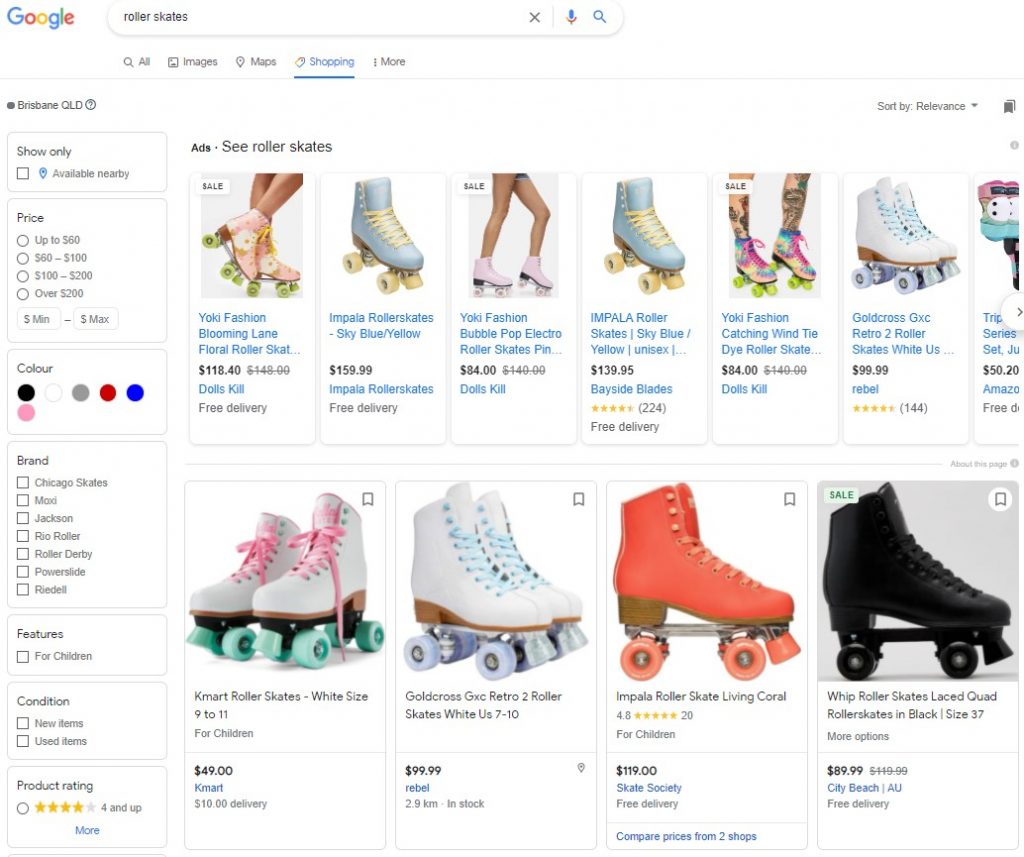
Learning how to leverage Google Shopping optimisation means your product will be seen by more consumers
To work on your Google Shopping feed optimisation, you’ll need access to two platforms; Google Ads and Google Merchant Centre. You might already be familiar with Google Ads, where you run your campaigns and control things like budgets, bidding strategy, location, ad schedule, and access insights. The Google Merchant Centre is the place you’ll keep your product feed and upload details about your products. This might include things such as an EAN, prices, colours, ISBNs, etc.
Your shopping campaign will work a little differently from the search campaign you might be familiar with in Google Ads. In a search campaign, your budget will be used to bid on pre-selected keywords that help get your products and services in front of the people searching for them. On the other hand, you won’t have direct control over which search queries trigger the ads when you launch a shopping campaign. Google crawls shopping advertisers’ sites and feeds to find ads relevant to a given search query. The relevance of your ads depends on the depth and detail of your Google Shopping feed. That’s why it’s crucial you know how to optimise your Google Shopping feed.
If you don’t have your Google Shopping feed set up, don’t worry; the team at Get More Traffic can work with you to create a campaign that shows off the very best of your products. If you already have a feed up and going but you’re looking for some advice and help with Google Shopping optimisation in time for Christmas, our team can help you with that too. We have some great tips and tricks to help you make the most of your Google Shopping feed this Christmas.
Get More Traffic’s Ultimate Guide To Optimising Google Shopping This Christmas
Did you know that 90% of Australians across all age groups research their Christmas shopping online? These potential customers are all at different stages of their consumer journey. Some will be researching ideas for gifts, some will be comparing prices for specific items. Others will be in the ‘buying’ phase of their journey, ready to spend their money there and then. No matter what stage of the journey your customers are in, you’re going to want a solid Google Shopping campaign to leverage the increased holiday traffic. Lucky for you, the Get More Traffic team have a few tips to help you do just that.
Use Christmas-related keywords. When planning your Christmas campaign, target keywords such as ‘present ideas’, ‘gifts for teenagers’ or ‘christmas present for mum’. These are the things people tend to search for in their panicked ‘buy’ phase of the consumer journey. This means they’re far more likely to purchase the products that make it straightforward and easy for them. Another audience who tend to search this term are people in their ‘research’ phase of the consumer journey. While they may not necessarily add your product to the cart in a spree of frenzied pre-Christmas panic, your brand and products will be front of mind as they think about what to buy their loved ones.
Use your old data to optimise best-selling products. You probably have a good idea of which products will sell well over Christmas, so make sure you do everything you can to promote those items. Don’t waste your budget on poorer-performing or low-value items when you could be investing in higher-value products.
Use product ratings. Reviews and ratings help your product stand out. They drive quality scores, which means you’ll get higher visibility and lower CPC. Additionally, when customers see items with product ratings or reviews, they receive positive reinforcement for their purchase decision.
Offer a special deal. If you’re selling an item in a competitive market, you might need to do something to sweeten the deal and entice them to choose your product over your competitor’s. For example, make a special offer promotion, a sale, or a free shipping offer to promote traffic to your site.
Provide plenty of information. There’s no such thing as too much information. The more detail you provide when describing your products, the more precisely Google can match your Ads with queries. Make sure you include crucial information like the brand, colour, size, style, model, gender, measurements, and any other relevant attributes. This will give your product the best chance of being seen by holiday shoppers.
Choose your category wisely. The Google product category tells Google what your product is, and if you leave it blank, Google will automatically assign it the most appropriate category. If you’re selling embroidery kits as stocking stuffers, don’t just use the tag ‘Arts & Entertainment > Hobbies & Creative Arts’. Instead, make the category as detailed as possible and write ‘Arts & Entertainment > Hobbies & Creative Arts > Arts & Crafts > Craft Organisation > Needlecraft Patterns’.
Update your product availability. When a customer sees online that you have something in stock, naturally, they expect to be able to buy that item. If they can’t buy the product online or, heaven forbid, they go into your brick and mortar store to find it unavailable; you’ll lose a customer. 1 in 3 Australian consumers will pick their second-choice brand over their first-choice brand just because it is present when they are ready to buy, so don’t think that your customers will hold out for you to restock!
If You Need Help With Your Google Shopping Optimisation This Christmas, Contact The Team At Get More Traffic.
Is your website a highway at peak hour? Because boy, you’ll be getting a lot of traffic with the help of our digital marketing experts. We’re passionate about helping businesses all over Australia harness the power of SEO and SEM to take their sales to the next level. If you’re ready to give traffic to your website the green light and learn how to optimise your Google Shopping feed, contact the team at Get More Traffic today!
Two Main Things You Need to Make Your eCommerce Site Convert
The global eCommerce market is growing, mainly due to the events of the past year, as well as the increased usage of smartphones and tablets. In fact, this 2021 it’s expected to total $4.81 trillion, wherein $3.56 trillion of which is projected to come from mobile eCommerce sales.
That said, it’s becoming increasingly important to make sure that your website is always optimised to generate conversions and sales. For those of you who have already started an eCommerce business, you’re probably already wondering what you can do to improve your current state and take advantage of the changes in the marketplace?
There are two main things you want to ensure that you’re making the most out of your eCommerce website:
Make Sure You’re Getting Relevant Traffic
One way to make sure that your budget is being spent to find potential customers searching for your products is to apply a keyword strategy and account structure that will ensure that you’re getting the right kind of traffic. Here, working with a Google Ads professional is important if you’re not sure how to go about setting it up on your Google Ads account.
Making sure that you’re attracting the right people is critical, especially if your goal is to increase conversions and sales on your website.
If your business is in the industry of health and wellness, for example, you want to avoid targeting general keywords. Be as specific as you can about your products and services, whether that’s cross fit training, bikram yoga sessions, organic produce, or essential oils, it’s important that your keywords are hitting the right note.
Apply the same specificity to your copy. Whether you’re running Google Display Ads or Facebook and Instagram Ads, your captions and copy should be engaging, targeted, and relevant with a clear call-to-action.
Optimise Your Website for Conversions
Once your Google Ads campaigns have achieved high relevancy, you need to audit and check on what users are doing once they reach your site. Find and identify any roadblocks that exist on your site and remove them. To accomplish that, go over to your Google Analytics dashboard and review your website and landing pages.
Google Analytics can track users’ engagement and movements on the site, giving you a good map of the path a converting customer travels. Through this, you can monitor and reflect on your traffic’s user experience, or what they do from the moment they visit your site to the moment that they click away.
You can also review each step of the checkout process, and dissect where your users are dropping off. All this data and information can help you make informed decisions on how to further improve your website experience.
Another useful tool for auditing is Crazy Egg, a little piece of software that analyses where your audience is coming from, what pages on your site they visit, and where they end up leaving or getting stuck at.
Crazy Egg also has the ability to draw you a heatmap of what particular parts of your website and landing pages that audiences actually engage with, such as which sections they linger on, or what buttons and links they click. This tool can provide you more than enough data on how you can better improve the audience’s overall experience on your website.
Now, all this can be a bit overwhelming, especially if you’re just starting out building out and growing your eCommerce website. That’s why it’s always a good idea to have professionals working with you to increase conversions and maximise your return on investment.
And if you’re looking to partner up with experts and professionals that are well-versed in the field, give one of our agents a call, and we can discuss how we can best help your business succeed in the online space.
